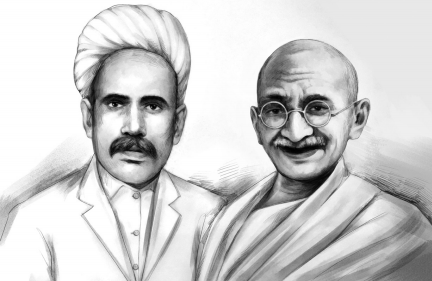
Shri Govindramji Seksaria was born in Nawalgarh in the erstwhile state of Jaipur on 19th October 1888. Orphaned at an early age of 16, he was faced with the challenge of looking after a large family and a not too prosperous business. He came to Bombay in the early 1900’s and started his business under the name and style of Messrs. Govindram Seksaria.
India was then under British rule and the environment was not conducive for Indians to conduct their businesses. There was an obvious lack of support and encouragement from the government, planning for growth was risky, and to progress was both difficult and hazardous. Almost all key industries were owned or managed by foreign firms who had the full support of the government.
It was in such an uncertain business and industrial climate that he started his career as a cotton trader in Bombay .Within a span of few years, his firm was accepted to membership of the Cotton Contract Board formed by the government, and later it became an original member of the East India Cotton Association.Shri Govindramji Seksaria became a name of consequence in the cotton market and came to be known as the ‘Cotton King’.
It was not to be expected that Shri Govindramji would limit himself to a single line of activity i.e cotton trading. He entered the bullion market, the various commodity markets, as well as the stock exchanges in Bombay and elsewhere in the country. His firm became a respected member of the Marwari Chambers of Commerce, the Bombay Bullion Exchange, the Bombay Seeds Brokers Association and the Indian Merchants Chamber. He was also one of the founding members of the Indian Stock Exchange.
His appetite for growth and diversifications was insatiable and eventually, the nation itself was too confining for this Lion of commerce. He became a member of the New York Cotton Exchange in the year 1934, a rare privilege for an Indian at that time, and remained a member of the exchange until his death. He also became active on the Liverpool Cotton Exchange. The Copper, Sugar, and Wheat exchanges of Britain and America also came under his purview.
On these international markets, his influence was as singularly felt as in the markets at home. Articles in The New York Times spoke of his market operations on the New York Cotton Exchange with a mixture of awe and bewilderment. His judgments in international commerce and market developments came to be respected and trusted.
After creating a stir in various market operations, he moved on to a more creative and enduring activity namely, Industry. Making a sound start with vegetable oils in the 1920s, he kept pace with the national development, diversifying into sugar, textiles, mining, banking, printing presses, motion pictures, bullion trading, and real estate investments. Geographically, his factories were strewn over half the country. In 1937 he founded Govindram Brothers Private Limited, the fountainhead of his Industrial vision.
Shri Govindramji built his diverse Industrial group through forward integration. His strategy of forward integration involved a selection of a wide range of commodities that could be both traded and manufactured. The commodity he initially selected for trading was cotton. He deployed as raw material the same commodities, especially cotton, that he traded in. He set up cotton ginning factories, cottonseed oil extraction plants, and owned textile mills. At the time of his death, he had approximately 5 lakh spindles under his direct control and through partnerships.
Shri Govindramji’s interest in politics was keen, his patriotism real, but he rarely stepped into active public life. To be sure, the temptations must have been great, but it was sound instincts that led him to reject those temptations. He made large contributions to the Freedom Movement and kept scrupulously away from the public eye save for rare special occasions when in 1940, he hosted the members of the All India Congress Working Committee (AICC) at his Poona bungalow, and on another occasion, he was seated on the dais with Netaji Subhash Chandra Bose in Bombay.
For a man who had received such acclaim and recognition in his own country and internationally, had no formal education himself. Public education, therefore, had a special appeal for him. His charities and munificence were loaded in its favour. He contributed towards the founding of several schools, colleges, educational, and medical institutions throughout India.
Shri Govindramji was more than just modest, little is known about his countless charities as he gave without affectation of generosity or patronage even as he earned without boast of ability or achievement. In his unmistakable style, which was apparent throughout his lifetime, he gifted half a crore rupee in his last days to charity. He is said to have donated around 2 crores to charity during his lifetime
Shri Govindramji Seksaria passed away in 1946 at the early age of 58. Rich tributes were paid to him by the press and other media. All the major markets in Bombay including the bullion exchange, cotton exchange, stock exchange remained closed as a mark of respect to the departed soul, a rare honor for an Indian at that time.
